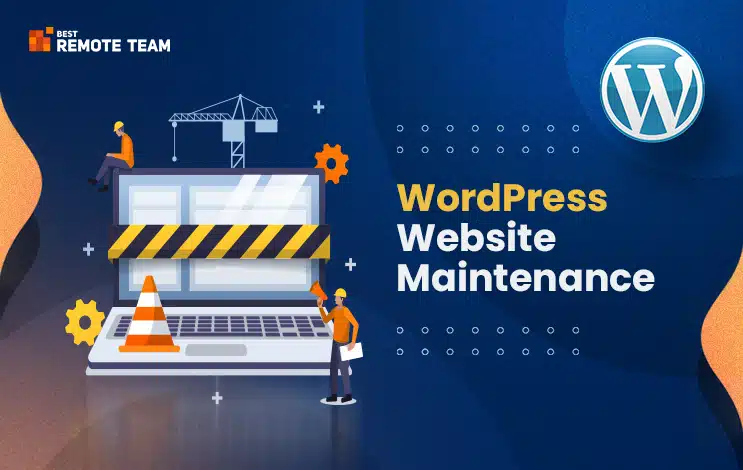WordPress remains one of the most popular content management systems (CMS) for building websites, offering flexibility, ease of use, and a wide variety of customization options. In November 2024, keeping your website up to date and well-maintained is more important than ever. Here are the top 7 tips for effective WordPress website maintenance to keep your site in top shape.
1. Regular Updates
One of the simplest yet most critical steps in WordPress website maintenance is keeping everything up to date. This includes updating the core WordPress software, plugins, and themes. Regular updates help protect your website from vulnerabilities and security threats. In many cases, updates include fixes for bugs, security patches, and new features that improve functionality and performance. When updates are available, make it a habit to install them promptly. You can set your WordPress site to update automatically for minor updates, while major updates may require manual intervention. Click here
Best Practices:
· Set up automatic updates for minor updates.
· Regularly check for available plugin and theme updates.
· Back up your website before updating any components.
2. Regular Backups
Backing up your WordPress website is an essential part of maintenance. Regular backups ensure that you have a secure copy of your website in case anything goes wrong—whether due to a cyberattack, server failure, or human error. With a reliable backup, you can restore your site to its previous state quickly and efficiently. For effective backup management, consider automating the process. Plugins like UpdraftPlus, BackWPup, or BlogVault can help you schedule automatic backups on a daily, weekly, or monthly basis. Always store your backups in multiple locations, such as cloud storage or external drives, to minimize the risk of data loss.
Best Practices:
· Schedule regular automatic backups.
· Store backups in multiple locations.
· Test backups periodically to ensure they can be restored.
3. Database Optimization
Over time, WordPress websites accumulate unnecessary data in the database. This includes post revisions, drafts, spam comments, and other temporary files that can slow down your site. Database optimization helps improve the overall performance of your website by cleaning up these unused items and keeping your database lean and efficient. Plugins like WP-Optimize and WP-Sweep can automate the database cleanup process, allowing you to remove old post revisions, spam comments, and other clutter. Additionally, these tools can help optimize database tables and improve query performance. Click here
Best Practices:
· Use plugins to optimize the database regularly.
· Clean up post revisions, drafts, and other unused data.
· Monitor your database size to avoid performance degradation.
4. Remove Unused Plugins and Themes
While WordPress offers a wide array of plugins and themes, not all of them are necessary for your website’s functionality. Over time, you may accumulate unused plugins or themes that can negatively impact your site’s performance and security. These inactive elements can lead to unnecessary bloat, slow load times, and security vulnerabilities if left unchecked. Make it a point to deactivate and delete any plugins or themes that you no longer use. Also, ensure that the plugins you keep are updated and well-maintained. Periodically audit your website to remove any unnecessary plugins and themes.
Best Practices:
· Regularly audit your plugins and themes to identify unnecessary ones.
· Remove inactive plugins and themes to improve performance.
· Ensure that the remaining plugins are updated and secure.
5. Enhance Website Security
Website security should always be a top priority. Cyberattacks are becoming increasingly sophisticated, and without proper security measures, your site could be vulnerable to hacks, malware, or data breaches. WordPress provides several built-in security features, but it's important to go beyond the basics to protect your site. Click here
Best Practices:
· Enable two-factor authentication for all users.
· Install security plugins and firewalls.
· Regularly scan for malware and vulnerabilities.
6. Monitor Website Performance and Uptime
Website performance directly impacts user experience, SEO rankings, and conversions. Slow-loading websites can frustrate visitors, leading to higher bounce rates. Additionally, frequent downtime can harm your site's reputation and result in lost traffic. Regularly monitoring your website's uptime and performance is vital for maintaining its success. Use tools like Google PageSpeed Insights, GTmetrix, or Pingdom to track page load times and identify areas for improvement. If your website is down or loading slowly, you’ll want to address the issue as quickly as possible.
Best Practices:
· Monitor your website's uptime and load time regularly.
· Use performance optimization tools to analyze and improve speed.
· Consider using a CDN to improve load times globally.
7. Manage User Comments and Spam
While comments are an essential part of community engagement, they can also be a source of spam and unwanted content. Spam comments can clutter your website and even lead to security risks. Regularly managing and moderating comments ensures that your site remains clean and user-friendly. Utilize anti-spam plugins like Akismet or Antispam Bee to automatically filter out spam comments. Also, set up a moderation system to review comments before they appear on your site. Engaging with genuine commenters fosters community while keeping spam under control.
Best Practices:
· Use anti-spam plugins to filter out unwanted comments.
· Regularly moderate user comments to ensure quality.
· Encourage user engagement through comments and discussions.


